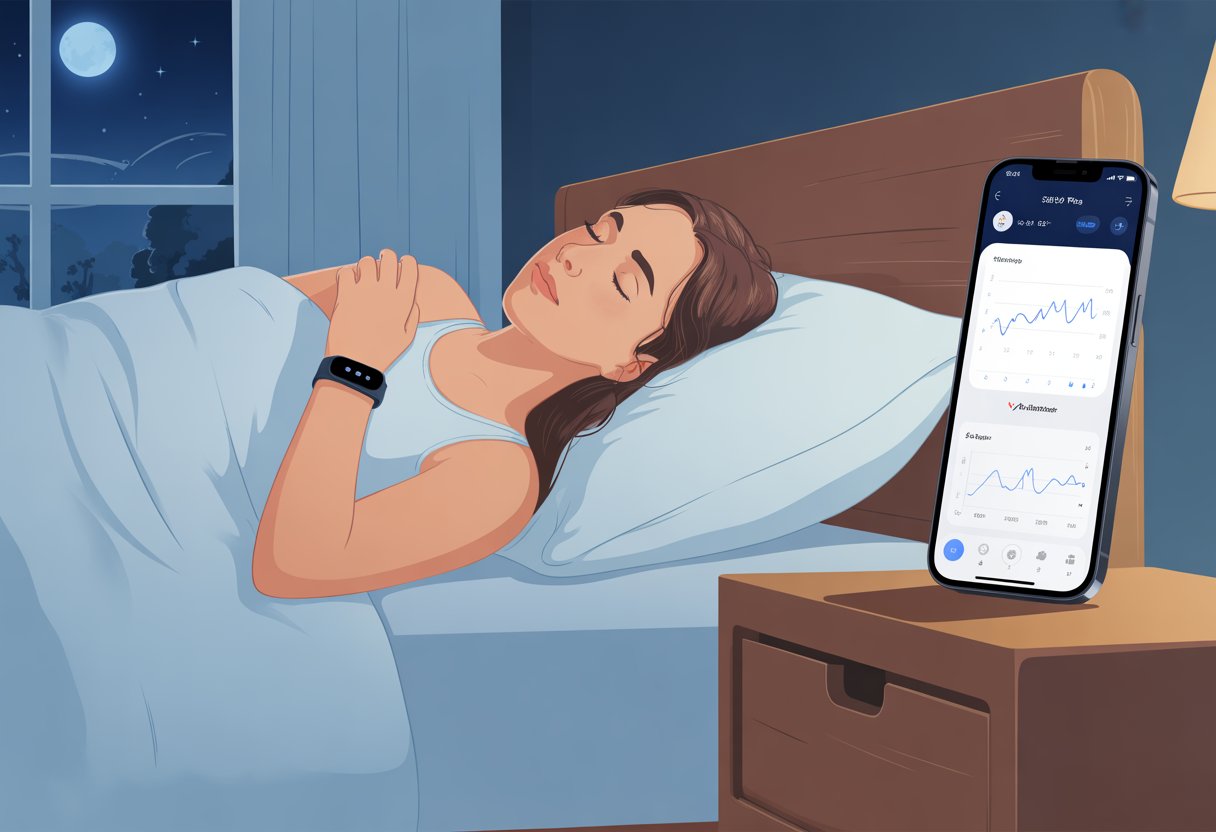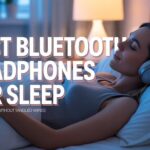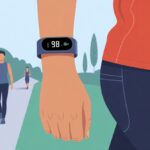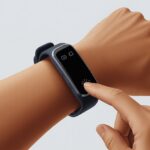Let’s be real—most of us think we sleep just fine until our fitness tracker calls us out. We buy these gadgets hoping we’ll wake up feeling amazing, but sometimes the data just leaves us scratching our heads. If we actually learn how to use a fitness tracker for sleep improvement, we can get better rest instead of just collecting a bunch of confusing graphs on our phones.

Turning these devices into real sleep sidekicks isn’t rocket science. We just need a few new habits, some patience, and maybe to pass on that late-night snack every now and then.
The right tweaks help us spot patterns, break bad habits, and wake up feeling less like zombies—without having to search “why am I so tired” for the millionth time.
If you’re over staring at confusing sleep scores and want actual results, let’s figure this out together.
It’s time to make those sleep stats work for us—no white coat required.
Understanding Fitness Trackers and Sleep Monitoring
Let’s dig into how these wrist gadgets track our sleep (and maybe catch us snoring, too). Knowing what’s on our wrist and how it works can help us get more of that sweet, sweet rest.
What Is a Fitness Tracker?
A fitness tracker is basically a little device that hangs out on our wrist and keeps tabs on what we do. Most of them count steps, track workouts, and—yep—keep score of our sleep.
Some trackers flash colorful screens, while others are just simple bands quietly collecting data.
Whether we’re marathon runners or just nap enthusiasts, these gadgets turn our days and nights into numbers, charts, and reminders.
These days, most models also track sleep, monitor breathing, and nudge us to move when we’ve been glued to the couch too long.
They’re like wrist coaches—sometimes helpful, sometimes a little bossy.
How Sleep Monitoring Works
Sleep tracking isn’t about reading our dreams—it’s about measuring movement and heart rate while we’re asleep.
Most fitness trackers use sensors to figure out when we’re awake, tossing and turning, or in deep sleep.
Our devices turn that into a sleep log and break down our night into light, deep, and REM stages.
The tech isn’t perfect, though. Sometimes our tracker thinks we’re asleep when we’re just lying still watching TV.
But overall, activity trackers give us a decent overview of how long we actually sleep.
If we want to make the most of these stats, we need to know what our tracker measures—and what it just guesses at.
We don’t have to remember every detail of our bedtime routine. Our fitness tracker does the number crunching, and studies suggest sleep duration tracking is usually pretty reasonable.
Key Sensors: Heart Rate, Accelerometer, and More
Fitness trackers use a bunch of sensors to monitor our sleep.
The accelerometer is the main player—it tracks how much we move at night and figures out if we’re sleeping or just flopping around.
The heart rate sensor checks how fast our heart beats. This helps because our heart slows down as we get deeper into sleep.
By watching these changes, trackers estimate how long we spend in each sleep stage.
Some devices add a gyroscope to sense direction and rotation. Newer models throw in blood oxygen sensors, which can show if our oxygen dips overnight.
All these sensors work together to paint a picture of our sleep, but no wrist device nails it 100%—for medical advice, we still need a pro.
For nightly numbers and trends, though, our tracker’s got us covered with plenty of useful data.
Choosing the Right Fitness Tracker for Sleep
Finding the right fitness tracker for better sleep isn’t just about looking stylish at the gym. We want accuracy, sleep data that makes sense, and features that don’t overwhelm us.
Let’s break down what matters before we invite one of these tiny sleep overlords onto our wrists.
Features to Look For
When we shop for a sleep-friendly fitness tracker, a few features really matter.
Sleep tracking basics like sleep stages (light, deep, REM) and a nightly sleep score are essentials.
A comfortable fit is huge—nobody wants to sleep with a brick on their arm. Also, we should look for battery life that lasts several days. Some trackers constantly need charging, which is the last thing we want when we’re trying to drift off.
Don’t forget heart rate monitoring and easy app integration so we can actually read our sleep data (even if we’re still half asleep).
Some trackers, like the Oura Ring, focus almost entirely on sleep and recovery, with a super simple design.
Must-have sleep tracking features:
- Sleep stage analysis
- Sleep score generation
- Heart rate measurement
- Comfortable, lightweight design
- Multi-day battery life
- Easy-to-use apps
Comparing Popular Brands: Fitbit, Apple Watch, WHOOP
Among the big names, Fitbit stands out for user-friendly sleep tracking. It gives us a clear sleep score and breaks down our sleep patterns in plain English.
Models like the Charge 6 last up to a week, so we can actually focus on sleeping—if we remember how.
The Apple Watch does a lot, but needs daily charging. Its built-in sleep app gives us basic insights, but we’ll need third-party apps for deeper analysis.
WHOOP doesn’t even tell time (seriously), but it’s all about sleep, recovery, and performance. It tracks heart rate and sleep 24/7.
WHOOP skips the screen, so we check our stats on the phone app. It’s a little different, but some people swear by it.
If we want something more low-key, the Oura Ring is light, simple, and almost entirely focused on sleep.
Accuracy and Sleep Data Reliability
Honestly, none of these gadgets are as spot-on as a full sleep study in a lab. Still, they’re pretty good at spotting our sleep stages and calculating a sleep score.
Fitbit and WHOOP usually get the best marks for separating tossing and turning from real sleep.
The Fitbit Charge 6 is a favorite for reliable sleep and fitness data. It uses heart rate, movement, and even oxygen levels to guess when we’re dreaming or drooling on the pillow.
The Apple Watch does fine but sometimes struggles to tell the difference between sleep stages.
WHOOP focuses on recovery and gives more detailed metrics, but it’s not as mainstream.
If we want results we can trust, we should look for trackers that measure heart rate and oxygen levels all night.
Here’s a quick table for comparison:
| Tracker | Sleep Score | Sleep Stages | Battery Life | Wear Style |
|---|---|---|---|---|
| Fitbit | Yes | Yes | 5-7 days | Wrist |
| Apple Watch | Limited | Yes | 1 day | Wrist |
| WHOOP | Yes | Yes | 4-5 days | Wrist |
| Oura Ring | Yes | Yes | 6-7 days | Ring |
Setting Up Your Tracker for Optimal Sleep Analysis
To get the most out of our sleep tracker, we need to set it up properly, wear it the right way, and actually look at the data it gives us.
That way, we’re not just collecting numbers—we’re actually making sleep better.
Configuring Sleep Tracking Settings
Let’s get into the settings maze. Most trackers ask for our bedtime, wake-up time, and sometimes our age or weight.
We shouldn’t skip these, or our sleep analysis will be way off.
On Fitbit, for example, we can set bedtime reminders. This is perfect if we’re the kind who scrolls memes until 2am.
Other settings enable sleep stages tracking, so we can see how much time we spend in light, deep, or REM sleep.
Each setting helps our tracker learn our patterns and wake us up gently.
Turning on resting heart rate and calorie tracking during sleep isn’t just interesting—it’s helpful.
We might notice restless nights happen after late snacks or that random energy drink at dinner.
It’s worth checking out Consumer Reports for extra tips.
Wearing Your Device for Best Results
A happy tracker is one we wear right. Most of us need to keep it on all night (even if our wrist feels weird sometimes).
Wear it snug, but not too tight—about a finger’s width above the wrist bone.
If it’s too loose, we’ll lose out on accurate resting heart rate data.
If we use a ring or watch, keeping it clean is key. Sensors and pizza grease don’t mix.
Fully charged batteries mean the tracker won’t miss our early morning sheep-counting.
Here’s a quick checklist—because who doesn’t love a checklist?
- Wear device snugly before bed
- Check battery level
- Make sure sensors are clean
- Avoid switching wrists during the night
Syncing and Interpreting Data
When we wake up, it’s time to play detective. We should sync our device to the app—this is where the magic (and sometimes the confusion) happens.
The app shows us how long we slept, how much light or deep sleep we got, and sometimes even guesses if we dreamed about running from bears.
Most trackers give us a sleep score or a graph. We should look for patterns, especially on nights we felt extra tired or surprisingly refreshed.
Paying attention to things like dips in resting heart rate or spikes in calories burned can help us spot what’s messing with our sleep.
If we want to get nerdy, guides like this one help us dig deeper. But honestly, just checking the basics each morning helps a ton.
When our sleep data is synced and we’ve glanced at the trends (maybe even shared them with friends), we’re one step closer to finally getting the sleep we want—hopefully without any nightmares about public speaking.
Decoding Sleep Data and Sleep Stages
Understanding our sleep tracker’s data feels a bit like learning a new language—except it’s all about how badly we need a nap.
Getting familiar with what’s happening while we’re out cold helps us catch problems, notice trends, and maybe even brag about our REM stats to friends.
Understanding Sleep Stages: Light, Deep, and REM
Every night, our bodies cycle through a handful of sleep stages. Trackers do their best to keep us in the loop, but let’s be honest—sometimes it feels like magic. The big three are light sleep, deep sleep, and REM. Each one ties into recovery and memory in its own weird way.
- Light sleep acts as the opening act. You can wake up from it easily, and it helps us bounce between the other stages.
- Deep sleep becomes our body’s repair shop. Muscles, bones, and the immune system get their tune-up here. We need enough deep sleep to avoid waking up feeling like a groggy zombie.
- REM sleep is where the brain sorts memories, tosses in some dreams, and maybe rewrites that embarrassing story from middle school. If we skimp on REM, we end up groggy and forgetful.
Most trackers estimate these stages by watching our heart rate and movement. Some, like the WHOOP strap, do a solid job tracking how long we spend in each.
Reading Your Sleep Score
We’ve all stared at our sleep score and wondered if 72 means we’re thriving or just barely scraping by. Basically, a sleep score blends data like total sleep time, tossing and turning, and how long we spend in each stage.
A high score usually means we nailed our goals—enough hours, solid deep sleep, and some dreamy REM. A low score is a gentle nudge (or a rude awakening) that we need to up our bedtime game.
Breakdown of a sample sleep score:
| Factor | Good Range | What It Means |
|---|---|---|
| Total Sleep | 7-9 hours | You got enough! |
| Deep Sleep | 1-2 hours | Restorative mode ON |
| REM Sleep | 90+ minutes | Good for memory |
| Disturbances | <10 per night | You stayed asleep |
Many trackers toss in coaching tips if our score dips, so we don’t have to play detective all alone.
Spotting Sleep Patterns and Trends
Tracking every night gives us a stash of data—way more useful than those notes we used to pass in class. Looking back, we can spot if weekends wreck our sleep or if movie marathons leave us with a REM drought.
Regular charting helps us see patterns like:
- Bedtime consistency (do we ever listen to our own advice?)
- How caffeine or stress messes with our sleep
- If our scores trend up or down over time
Most tracker apps show off pretty graphs to make all this easier to spot. For example, Samsung Health shows our sleep times, snoring, and offers coaching.
The real trick is using these patterns to tweak our routine—not as an excuse to crawl back into bed (even if that sounds tempting).
Using Sleep Insights to Improve Sleep Quality
Sleep trackers give us more than a bedtime report card. With the right moves, we can spot what ruins our sleep and figure out how to boost the best stages.
Identifying Sleep Disruptors
Sometimes our beds feel like crime scenes—something keeps busting up the peace, and it’s not always the neighbor’s dog. Sleep trackers log how often we wake up, how restless we get, and how much we toss and turn. These clues help us hunt down the usual suspects: late-night snacks, caffeine, doomscrolling, or too much light in the room.
Maybe every time we stay up late watching horror movies, our sleep quality tanks. Or the tracker shows we wake up every hour after a soda at dinner. With this data, we can ditch or tweak these triggers. Johns Hopkins Medicine says trackers don’t measure sleep directly, but they still help us notice patterns and find habits that mess with our rest.
Once we spot the villains, we can set up a routine to keep them out. That might mean regular bedtimes, darker rooms, and banishing our phones—maybe even stashing them under the bed with the dust bunnies.
Improving Deep and REM Sleep
Now for the good stuff. We all want more deep and REM sleep—body repairs, wild dreams, and a break from adulting. Fitness trackers estimate how long we spend in these stages. If our REM or deep sleep is low, it’s a sign our nights need an upgrade.
Some trackers, like the ones Garmin talks about, give us a score based on sleep stages and quality. We can test out changes like earlier bedtimes, a quiet bedroom, or even reading a boring book if we’re desperate. The trackers show us if our tweaks actually work.
To get more deep sleep, we might skip heavy meals before bed and keep the room cool and dark. For more REM, we could manage stress and cut out late-night drinks. The goal? Turn our nights into five-star sleep adventures—with less drama and way fewer monsters.
Taking Action: Healthy Habits and Lifestyle Tweaks
If we want our tracker to help us sleep better, we need more than fancy gadgets and wishful thinking. Smart daily habits and a few fun tweaks can make a bigger difference than we expect.
Optimizing Bedtime Routines
Let’s be honest—scrolling in bed isn’t helping anyone. Plugging devices in across the room forces our brains to switch off. Our trackers can even buzz us when it’s time for lights out—no more “just one more episode” at midnight.
Getting ready for bed at the same time every night trains our bodies to expect sleep. Trackers let us schedule bedtimes and wake-up times so we actually stick to it.
Consistent routines, less chaos!
We should also keep our rooms dark and quiet. It’s boring, but it works. A glass of warm milk is optional, but don’t expect a reminder notification for that.
Activity and Its Impact on Sleep
Trackers do more than count steps—they spy on us (nicely) all day and night. The more we move, the better we sleep, so let’s chase those “goal completed” fireworks.
Working out in the morning helps us fall asleep faster at night. If we save our energy bursts for late evening, we’ll just end up counting sheep (or worse, checking emails).
Not sure if you moved enough? The tracker’s activity log keeps us honest.
Here’s a quick cheat sheet:
| Activity | Best Time | Sleep Impact |
|---|---|---|
| Walking | Morning | Increases deep sleep |
| Workouts | Morning/Afternoon | Helps us fall asleep faster |
| Couch Potato | Anytime | Not recommended! |
Motivation and Progress Tracking
Let’s face it—we all like a little bragging. Our fitness tracker stats let us show off, even if it’s just to ourselves. Watching sleep numbers and activity points stack up feels good, and steady progress keeps us motivated.
Setting goals—like seven hours of sleep or 10,000 steps—gives us something to chase. Trackers hand out badges and reminders, because who doesn’t want a virtual medal for “best nap?”
Tracking sleep and recovery tells us when it’s time to rest more—our tracker acts like a coach who never yells, just vibrates.
Motivation gets easier when we see our wins (and losses) right on our wrist.
When to Seek Professional Help
Sometimes, our trackers show numbers that aren’t just unimpressive—they’re downright worrying. If wearing that tracker has us doubting our sanity (or our ability to function after a “full night’s rest”), it might be time to look past self-help and call in the experts.
Recognizing Signs of Insomnia and Sleep Disorders
If we’re staring at the ceiling more than the back of our eyelids, our bodies might be waving red flags. These signs include:
- Trouble falling asleep (counting sheep past 1000 is a hint)
- Waking up often during the night
- Feeling tired even after we think we slept enough
If our tracker keeps showing low sleep scores, that’s another clue something’s up. Persistent problems like these could point to insomnia or another sleep disorder. We shouldn’t ignore them or just blame coffee; sometimes these patterns mean we need a doctor.
Sleep Apnea, Snoring, and When to See a Doctor
Snoring loud enough to scare the dog or waking up feeling like we ran a marathon with a pillow on our face? Not normal—even if our families say it’s “just us.” Sleep trackers sometimes catch weird breathing changes, and that might mean sleep apnea.
Classic symptoms include:
- Loud snoring
- Gasping for air at night
- Daytime sleepiness even after “sleeping” for hours
If our tracker picks up on these or our partners keep moving to separate rooms, it’s time to see a doctor. Untreated sleep apnea can raise the risk of serious health problems, so let’s not let snoring be our only cardio.
How Sleep Studies and EEGs Help
When restless nights become the new normal, doctors might pull out some science-y tools. A sleep study (polysomnography) tracks our brain waves, oxygen levels, heart rate, and movement while we snooze. We’ll feel like a science experiment with wires everywhere, but it’s worth it.
An EEG (electroencephalogram) checks for abnormal brain activity while we sleep. This can spot issues like narcolepsy or epilepsy.
These tests give doctors detailed info our trackers can’t provide. Sleep studies and EEGs are painless and give a full picture. If our gadgets show strange patterns we can’t explain, these medical tools are next on the list.
Maximizing Benefits Beyond Sleep
Fitness trackers aren’t just bedtime buddies—they’ve got perks all day long. With a few tweaks to our routines, we can boost recovery, sharpen our minds, and sneak in some mindfulness when we need it most.
Daytime Recovery and Mood Boosts
After dragging ourselves out of bed, our tracker keeps tabs on more than just steps or how many times we almost trip over the dog. It collects data on things like activity, heart rate, and blood oxygen to help us figure out when our bodies need a little extra TLC.
If our heart rate stays high after a workout, that’s the tracker’s way of waving a tiny flag: “Take it easy!” This feedback helps us know when to grab a snack, drink water, or just flop onto the couch for a break.
A good tracker even nudges us to move or rest, keeping our mood in check. On tough days, that reminder to stretch our legs can lift our spirits—especially when paired with a “You’ve got this!” notification.
Mental Clarity and Overall Well-Being
Our brains need attention too. With constant data rolling in, fitness trackers remind us to balance activity with downtime. Staring at our sleep score and stress data isn’t just a numbers game—it can actually reveal when we’re tired or foggy and help us act before we zone out in a meeting.
By tracking biofeedback, like blood oxygen and heart rate trends, we can learn when our focus peaks or fizzles. It’s like having a helpful, always-alert assistant (minus the small talk).
We can use tracker tips to schedule focus breaks, drink water, and get some light movement. Over time, these changes help sharpen our minds and maybe make us slightly less forgetful.
Integrating Meditation and Mindfulness
Our trusty tracker isn’t just for calculating bedtime guilt. It actually doubles as a pocket-sized meditation coach.
Most trackers toss in built-in guided breathing or mindfulness sessions. That means we get an easy way to sneak in a few calm moments, even on a busy day.
Sometimes the tracker buzzes when our stress spikes. Instead of hurling our phones across the room, we can try a quick breathing exercise.
Some trackers even check if we’re following along, whether we’re a Zen master—or, honestly, just fidgety and trying.
You don’t need chanting or incense to make meditation part of your routine. Just a few quiet minutes, and your tracker’s got your back.
By grabbing these mindful moments, we’re not just helping our sleep. We’re nudging our days toward something a little lighter, a little calmer.
If you’re curious about mindful sleep tracking, Calm’s guide on using a sleep tracker mindfully is worth a peek.
- How to connect Bluetooth headphones to a Chromebook Without Summoning Tech Support - December 15, 2025
- Best Fitness Trackers for EMS Workers: Because Your Heart Rate Isn’t the Only Thing Racing - December 15, 2025
- Why do my Bluetooth headphones not skip tracks? Tech tantrums and other musical mysteries - December 14, 2025






